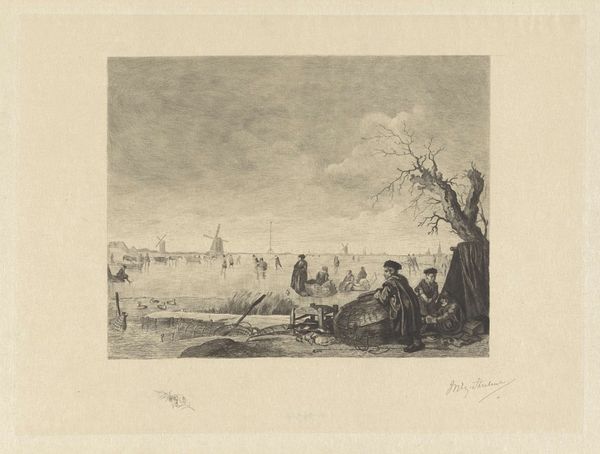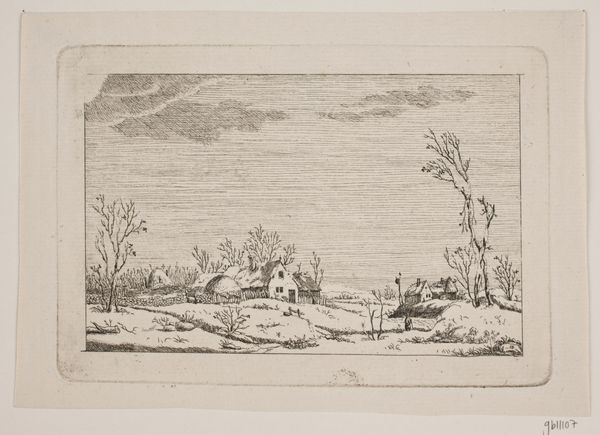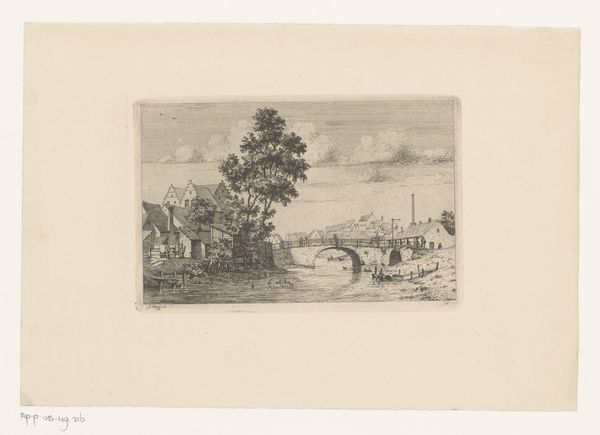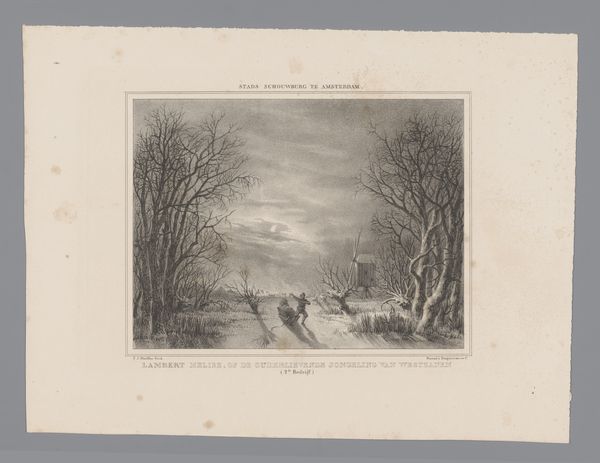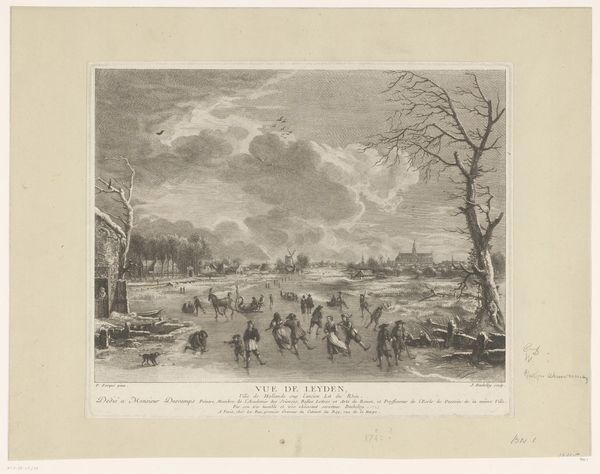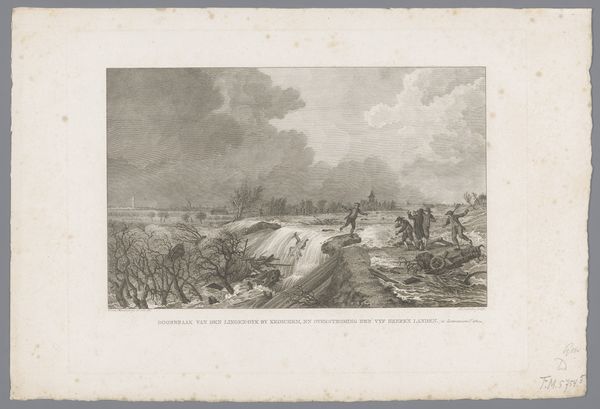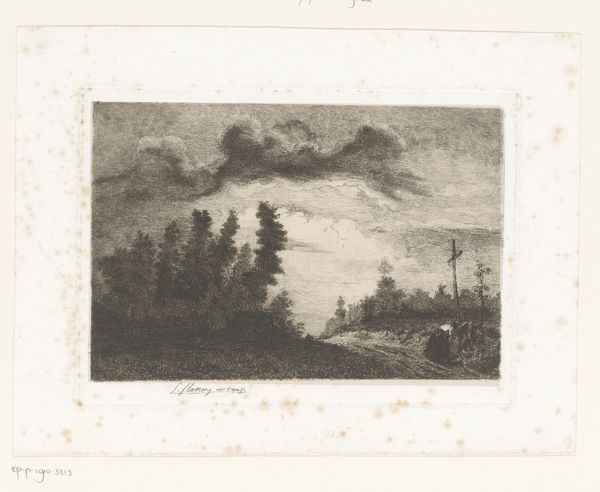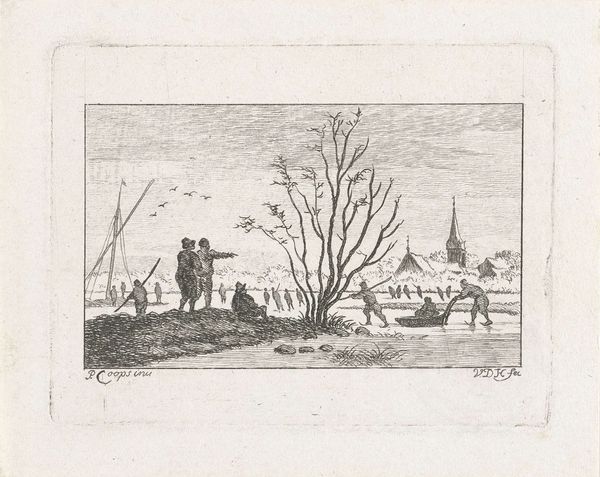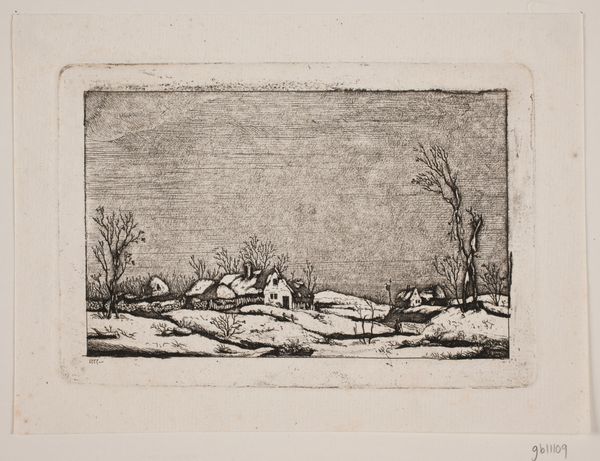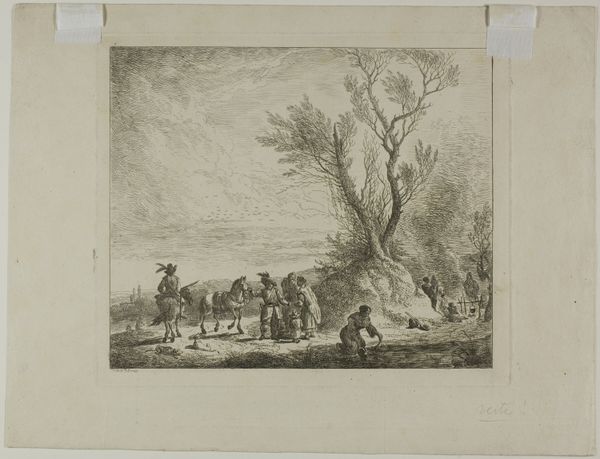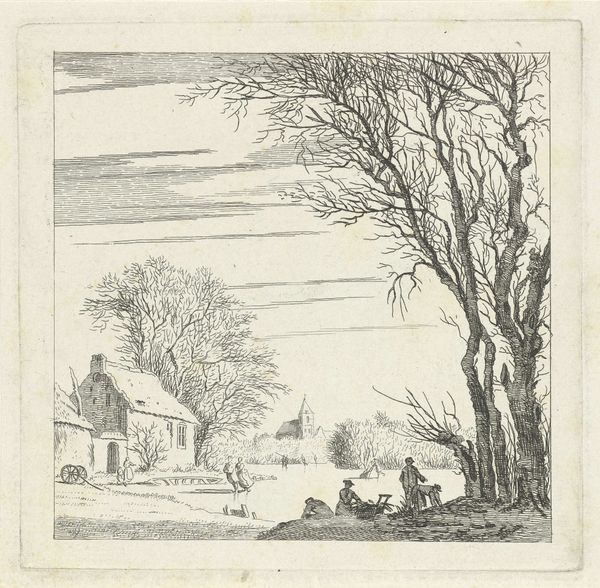
print, etching
# print
#
etching
#
old engraving style
#
landscape
#
figuration
#
line
#
genre-painting
#
northern-renaissance
#
realism
Dimensions: height 67 mm, width 82 mm
Copyright: Rijks Museum: Open Domain
Curator: Ah, another intriguing artwork. This etching, titled "Winterlandschap," comes to us from the hand of Jan van Noort, likely created sometime between 1766 and 1837. It's a small print, capturing a winter scene. Editor: My immediate reaction is to the detail—it's a busy composition, teeming with figures skating and enjoying the winter landscape, rendered with very delicate lines. It's interesting to observe how such a muted palette can evoke the particular chill of a winter’s day. Curator: Precisely. Van Noort was skilled at evoking the character of the landscape through genre scenes and subtle narratives. What seems at first glance to be simply a snapshot of a winter’s day unfolds into a complex social portrait. Winter itself, symbolically, is often linked to contemplation, resilience in hardship, and acceptance of natural cycles. Editor: You can see it too in how he treats light. The way the light hits the ice versus the figures wrapped in heavy cloaks. These formal choices allow you, the viewer, to engage with the depicted scenes—not merely observe. Curator: It's hard not to see echoes of Bruegel in the rendering of the common folk amidst this wintry setting. This harkens back to older, even medieval tropes of connecting moral or philosophical messaging with quotidian events. The activity almost feels performative, demonstrating how communal traditions helped these individuals cope and persevere during a dark time. Editor: That tension between individual form and overarching structure makes it interesting. There are compositional groupings that pull the eye – those conversing figures, the solitary skaters, and the church that is faintly sketched out into the distance. You’re almost forced to consider your role as an outside observer looking into the scene. Curator: And the act of observing connects us to the symbolic function of the landscape itself as a reflector of social health and stability. Consider, too, that skating may well act as an image of social mobility and freedom, counterbalanced by those cloaked figures clustered at the lower right. They’re separated both by physical space and possible social standing. Editor: Looking again at how those figures are organized, I see a clear tension between open and closed forms, each holding a symbolic place within Van Noort's aesthetic framework. These stark formal dichotomies point to an inner logic that the entire scene adheres to. It’s satisfying. Curator: It provides a fascinating glimpse into 18th-century life, interpreted through symbolic imagery and narrative structure that transcends mere documentation. Editor: Indeed, the artistry behind it—especially within such precise parameters of etching—makes you respect the complexity found within.
Comments
No comments
Be the first to comment and join the conversation on the ultimate creative platform.
